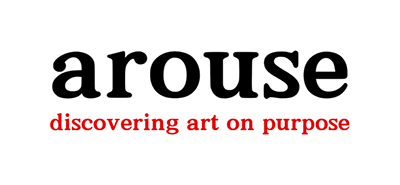Exploring Purpose in Art Exhibitions
Modern art exhibitions, as featured on prominent editorial art platforms, increasingly emphasize purposeful themes and concepts. These exhibitions are meticulously curated to bring attention to meaningful societal, environmental, and personal issues. This focus on purpose not only enhances the viewer’s experience but also aligns with the broader framework of the metamodern era, which seamlessly blends sincerity and irony.
Notable exhibitions often spotlight pressing issues such as climate change, social justice, and mental health. By foregrounding these themes, artists and curators aim to invoke thought, inspire action, and forge a profound connection with their audience. For instance, an exhibition centered on environmental concerns might feature works that juxtapose the beauty of nature with the devastation caused by human activities. This intentional contrast engages viewers, prompting them to reflect on their own impact on the planet and potentially motivating them to embrace sustainable practices.
Similarly, exhibitions focusing on social justice can have a powerful, thought-provoking impact. Artworks highlighting racial inequality, gender discrimination, or economic disparity challenge viewers to consider these issues’ complexities and their roles in perpetuating or combating them. By presenting these themes through diverse artistic voices, these exhibitions foster empathy, dialogue, and a more nuanced understanding of the social fabric.
On a more personal level, art addressing mental health and personal struggles creates a space for shared vulnerability. Exhibitions that explore themes of anxiety, depression, and resilience often resonate deeply with viewers, offering solace and a sense of community. This emotional connection underscores the therapeutic potential of art as a means of both expression and healing.
Editorial art platforms play a crucial role in contextualizing these exhibitions within the metamodern era. By offering insightful commentary and analysis, they help audiences navigate the blend of sincerity and irony that defines contemporary art. This duality is crucial to understanding the transformative power of purpose-driven exhibitions, which seek not only to present aesthetic beauty but also to provoke meaningful engagement and inspire change.
In-depth Artist Interviews: Unpacking Motivations in the Metamodern Era
The metamodern era marks a significant departure from previous artistic movements, characterized by a blend of sincerity and irony, hope and doubt, and the merging of genres and mediums. Our editorial art platform has conducted numerous in-depth interviews with artists operating within this rich and complex context. These conversations unveil the multi-faceted motivations and purposes behind their creative endeavors.
A common thread observed in these interviews is the artists’ intent to balance personal expression with a broader societal commentary. Many artists articulate how their work navigates the dual realms of introspective exploration and external critique, aiming to resonate personally while engaging with contemporary social issues. This dual approach not only enriches their work but also elevates it to a form of ongoing dialogue with their audience.
Another prominent theme is the fusion of multiple genres and mediums. Metamodern artists often cross traditional boundaries, merging painting with digital art, sculpture with performance, and so on. This eclecticism is not merely an aesthetic choice but a strategic one, designed to challenge conventional perceptions and invite new, thought-provoking interpretations. Interviews reveal that this method of creating hybrids is driven by a desire to expand the expressive potential of their work.
Moreover, the emotional and intellectual drives that fuel the metamodern artistic process cannot be understated. Artists share how their work is shaped by an oscillation between emotional intensity and critical analysis. This blend of heartfelt sincerity and intellectual engagement reflects the complexity of their motivations, as they strive to create art that is both deeply personal and universally relatable.
The insights gleaned from these interviews also shed light on the unique challenges that metamodern artists face. From grappling with the ever-evolving art market to addressing the pressures of maintaining artistic integrity, these challenges are diverse and demand innovative solutions. Despite these obstacles, artists express a forward-looking optimism, driven by aspirations to influence future art directions and contribute positively to societal discourse.
In capturing the unique perspectives and philosophies that define the metamodern paradigm, these interviews offer a window into the dynamic and transformative world of contemporary art. By understanding the motivations and inspirations of these artists, we gain a deeper appreciation for the complexities and nuances that characterize the metamodern era.
